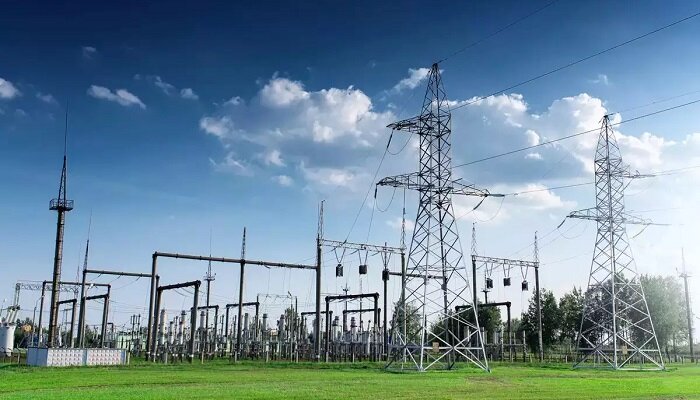The United States happens to be currently experiencing an unprecedented imbalance between supply as well as demand for transformers, and that’s not the shape-shifting robots one is talking about, but the critical devices that are used on the power grid.
It is well to be noted that almost every kilowatt-hour of electricity flows via a distribution transformer. In similarity to how traffic cops manage the flow when it comes to vehicles on a road, distribution transformers go on to manage the flow of electricity alongside the power grid by way of changing high-voltage electricity from the transmission lines into low-voltage electricity right before it reaches the consumers.
The researcher from the National Renewable Energy Laboratory- NREL, Killian McKenna, said that the distribution transformers happen to be a bedrock element of their energy infrastructure; however, the utilities required so as to add or replace them happen to be currently facing high prices along with long wait times because of shortages in the supply chain. The importance of this can be gauged from the fact that this happens to be having the potential to affect the energy accessibility, dependability as well as affordability, and, as a matter of fact, everything else.
So as to get ahead of the demand that is rising, McKenna as well as his NREL team happen to be leading the effort which happens to be funded by the U.S. Department of Energy’s- DOE’s Office of Electricity as well as the Office of Policy in order to quantify long-term demand when it comes to the distribution transformers.
It is well to be noted that numerous factors can go on to drive the demand in terms of transformers, which in turn goes on to make long-term forecasting specifically extremely challenging, said McKenna. For example, the load growth when it comes to electrification of the buildings as well as transportation, the increased frequency along with the magnitude of extreme weather events, and even the need to modernize aging electrical infrastructure can all go ahead as well as impact the future demand when one talks of the transformers.
Decoding Demand Due to Data-Driven Insights
NREL happened to complete the first phase of this study which went on to quantify the number, capacity, age, as well as use of the nation’s present transformer stock, something that has never ever been done in the past.
McKenna added that most of the country’s current set of transformers happens to be owned by more than 3,000 distribution utilities throughout the country, and as one can imagine, all this adds an extra layer of intricacy to their effort so as to quantify them.
Interestingly, based on the data which has been collected by the transformer, NREL goes on to estimate that the distribution transformer capacity may as well need to surge by 160%–260% by 2050 as compared to the 2021 levels in order to meet commercial, residential, industrial, as well as the transportation energy requirements. The rise in the demand is largely pushed due to the aging transformers as well as electrification. NREL happens to be also examining the potential demand rises because of the extreme weather conditions along with the utility undergrounding, as well as the resilience programs that make use of numerous types of transformers.
It is worth noting that this analysis happens to be based on the estimation of peak demand that needs to be met by way of distribution transformers, which considers the rising electricity demand all across the economy from the scenarios outlined within the study on NREL’s Electrification Futures.
NREL also went on to identify the increasing demand for step-up transformers that happen to be used so as to convert low-voltage electrical generation into high-voltage electricity when it comes to long-distance transmission. This kind of transformer happens to be needed so as to integrate wind as well as solar farms on the power grid by way of adjusting voltages, enhancing the efficiency, as well as elevating the reliability of the grid.
New Capabilities along with the Conversations Ahead
It is worth noting that the DOE has gone on to charge the NREL by way of developing additional analysis capacities so as to assess the future transformer demand, like examination of growth in load, replacement requirements, new customers, as well as resilience investments. DOE will go ahead and share this analysis with the stakeholders in order to help them better understand the important load metrics, like how an increased electrification goes on to affect the peak electricity demand, and make informed decisions based on distribution planning.
In order to facilitate any further action on this, DOE will go ahead and introduce such insights within the ongoing solutions-oriented convening underway with the power sector stakeholders, manufacturers, as well as federal partners, all of whom happen to be focused when it comes to identifying as well as executing any practical actions that will aid in easing the mismatch in supply-demand in terms of distribution transformers. It is well to be noted that NREL’s ongoing evaluation efforts will go on to help inform such collaborative discussions by way of providing the overall data that happens to be having the power to be a grid game-changer.
The principal deputy assistant secretary, Office of Electricity, Gil Bindewald, said that the administration happens to be focused on the significance when it comes to distribution transformers as well as other crucial elements to the reliability of the nation’s power grid. They happen to be indeed grateful for this kind of robust collaboration among all the stakeholders that has gone on to occur to-date and they are hopeful that this kind of cutting-edge analysis will keep continuing to serve as a catalytical foundation so as to inform impactful solutions that go on to make sure that America can go on to meet its emerging energy requirements.




































